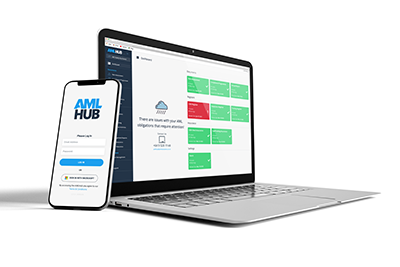
If the time for your AML audit is rapidly approaching, the most important question at the forefront of your mind should be: who will be my AML auditor?
Every business prides itself on knowing its customers. Understanding their needs, wants, and behaviours is the foundation on which a business grows.
Typically, customers who use the same products and services tend to behave in the same way, with similar patterns of transactions and activities. And when a customer is acting unusually, i.e. outside the expected pattern of behaviour, it’s easy for businesses to spot this.
For reporting entities captured under the AML/CFT Act, these unusual activities or transactions are called red flags. Red flags are important because they could be indicators of money laundering or other illegal activity. So, reporting entities have an obligation to monitor for, analyse, and report any formed suspicions to the Financial Intelligence Unit.
The FIU relies on suspicious activity reports, as businesses are in the best position to spot anything that is an indicator of crime for the FIU to follow up on.
Recording and quickly resolving potential suspicions showcases good AML. It is evidence to your auditor and Supervisor that you are alert to unusual activity / transactions and are dealing with them effectively from a money laundering risk aspect.
Red flags are highly contextual to your business, its industry, risk profile, and the products/services it provides. For example, red flags for a small real estate company doing local sales could be different to red flags for a large real estate firm managing deals with international clients.
Some examples of red flags are:
Against each identified unusual transaction or activity, you should document 5 key things to demonstrate your review:
Where a suspicion is formed, details regarding when and why the suspicion is formed as well as reference to the reporting undertaken should be documented. Any information pertaining to SARs/STRs should be held in a confidential ‘need to know’ manner.
Important! Only relevant staff members should be aware that an Suspicious Activity Rerport / Suspicious Transaction Report has been filed (e.g. your Compliance Officer and Director). However, all staff should always be vigilant in assessing customer behaviour for potential suspicion.

With a built-in suspicions register, AMLHUB makes it easy to keep track of any potential, formed, and lodged suspicions, and if any have been internally resolved.
See how easy it can be in a short web demo. Request yours today!

If the time for your AML audit is rapidly approaching, the most important question at the forefront of your mind should be: who will be my AML auditor?

Finding your AML auditor is one of the first steps to take when it comes to preparing for your three-yearly AML audit. But to make sure you're as ready as you can be,...